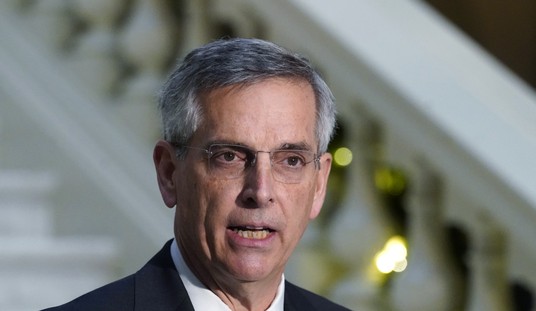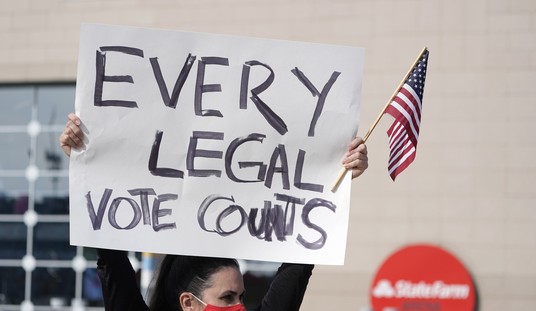When Republicans took full control of Congress in their triumphant 2014 election, it was clearly the beginning of the end of Barack Obama's presidency.
His second-term agenda, if he ever had one, was dead, forcing him to turn to a series of unconstitutional executive orders that will be bottled up in the courts for the rest of his tenure, or overturned by judicial decree.
Even his signature program, Obamacare, might be gutted by a Supreme Court challenge, which questions whether its government subsidies are lawful.
He had hoped to end his trouble-filled presidency with the passage of the 12-nation, Trans-Pacific Partnership trade agreement, until it was ignominiously shot down by his own party in the House -- perhaps fatally.
But that's only a part of the policy-making wreckage he has strewn across the nation's political landscape.
He came into office in the midst of a severe recession, confidently declaring that he'd return a dying economy to full health and vigor. Yet in the seventh painful year of his presidency, it remains chronically sluggish, unable to stand on its own two feet without the support of the Fed's costly assistance.
It wasn't reported on any of the major network news shows, but the nation's central bank said as much Wednesday in its dismal economic growth projections for the rest of this year.
The Fed downgraded its growth forecasts to between 1.8 percent and 2 percent, far below its 2.3 to 2.7 percent estimates in March.
Fed economists were also a little less optimistic about a lower unemployment rate for the year. In March, they said it would fall to as low as 5 percent by the end of the year. Now they are forecasting that it would decline to just 5.2 percent, at best.
"If they're correct, annual (economic) growth would be the worst since 2011 and would be far from the breakout performance some economists had hoped for this year," writes economic analyst Jim Puzzanghera on the CTnow website.
Recommended
Fed Chairwoman Janet Yellen went to great lengths at her news conference to avoid any hint about when the board would begin raising interest rates, and continued to insist that the slowing economy was only temporary.
Yet in a somewhat more pessimistic speech last month, she said "The various headwinds that are still restraining the economy ... will likely take some time to fully abate, and the pace of that improvement is highly uncertain."
In recent decades, recessions have, on average, lasted about two years, as was the case in the Reagan recovery of 1983, which followed the recession of 1981-82.
"The end of 1983 marked a year of recovery from one of the longest and deepest post-World War II recessions ... Overall, real GNP grew by about 6 percent over the year," wrote economists Eugene H. Becker and Norman Bowers in an analysis for the U.S. Bureau of Labor Statistics.
Compare robust 6 percent growth in only two years, as a result of the Reagan tax cuts, to this week's Fed forecast of 1.8 percent economic growth in the seventh year of Obama's presidency.
The reason for the wide disparity between the two is all about competing policies. Obama copied FDR's New Deal stimulus, which attemped to end the Great Depression with massive government spending on public works projects. Obama spent nearly $1 billion on similar "shovel-ready" programs. Neither worked.
Reagan's across-the-board tax cuts put money back into the bloodstream of the economy and into the hands of consumers, workers and business investors.
In just two years, it was morning in America again. And in 1984, the country voted on how Reagan's policies were doing at the grass roots. He carried 49 states.
Now Hillary Clinton is running, along with a clutch of other Democrats, to succeed Obama in the White House. She has yet to fully spell out what her economic and other domestic policies will be, but she has supported Obama's failed policies and, as a candidate, adopted many of them in her campaign speeches.
Here's a sampling of proposals from Vermont's ultra-leftist Sen. Bernie Sanders -- one of Clinton's rivals for the Democratic nomination -- many of which she supports:
Raising the federal minimum wage, splitting up the big banks, public campaign financing, enacting single-payer health insurance for everyone, universal pre-kindergarten, free college education, a federally mandated 10 days off annually for workers, and a much broader federal jobs program.
What about cutting tax rates to spur capital investment, business expansion and new entrepreneurial start-ups, as President Kennedy proposed, and as Bill Clinton fully embraced in his second term?
Forget about it. In today's extreme hard-left Democratic Party, pro-growth tax cuts of any kind are the political kiss of death in nominating primaries.
According to a voter survey this week by the Gallup Poll, "Democratic candidates for the 2016 presidential nomination face a significantly more left-leaning party base than their predecessors did over the last 15 years."
The Gallup survey found that "47 percent of Democrats and Democratic-leaning independents now identify as both socially liberal and economically moderate to liberal."
This compares with "39 percent in these categories in 2008, when there was last an open seat for their party's nomination, and 30 percent in 2001," Gallup said.
While this is the hard-left political environment Clinton must appeal to if she is to secure the nomination, it also pushes her even further to the left of the broader electorate in the general election.
If that happens, she risks becoming the Walter Mondale or Michael Dukakis of the 2016 presidential election.

























Join the conversation as a VIP Member